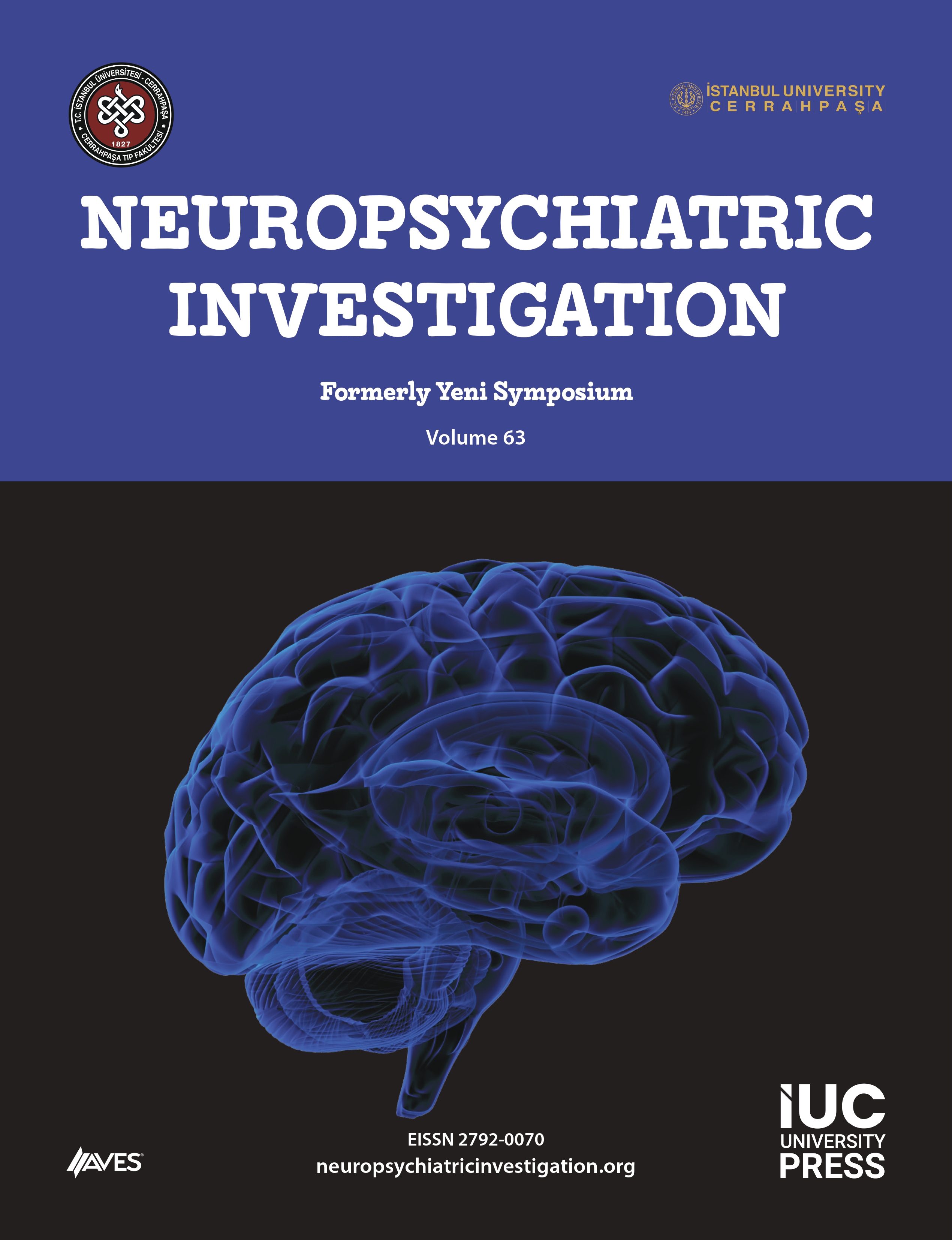Introduction: We aimed to investigate the relationship between cavum septum pellucidum (>6 mm) and cavum septum pellucidum et vergae with psychopathology and neuropsychological functions in individu- als with these conditions by comparing them with normal cranial imaging. Methods: Thirty subjects with cavum septum pellucidum and cavum septum pellucidum et vergae on cranial magnetic resonance imaging and 30 controls without pathology on cranial magnetic resonance imaging were included in our study. A sociodemographic data form, Beck Anxiety Inventory, Beck Depression Inventory, and Barratt Impulsivity Scale-11 were applied to the participants. When it comes to neuropsychological functions, digit span test, Boston Naming Test, Verbal Memory Processes Test, Benton Face Recognition Test, Stroop Test, Verbal Fluency Test, and Wisconsin Card Sorting Test were applied to the patients. Results: In the anomaly group, 26 had cavum septum pellucidum et vergae, while 4 had enlarged cavum septum pellucidum, presenting no statistically significant difference in the rates of psychiatric disease between the anomaly and the control group. The group with enlarged cavum septum pellucidum and cavum septum pellucidum et vergae had lower performances in working memory, naming, attention, and executive functions than the controls. Conclusions: Abnormal developmental processes related to the formation and maturation of the septum pellucidum may be responsible for widespread cognitive impairments where these anomalies may act as an indicator for these conditions. In order to better understand the relationship of these anomalies with neuropsychological functions and psychiatric disorders, further studies with larger samples are needed.
Cite this article as: Cengiz Al Z, Demirci H, Güler Kenar J, Akil Özer Ö. The relationship between cavum septum pellucidum and psychopathology and neuropsychological functions. Neuropsychiatr Invest. 2023;61(2):57-64.




.png)